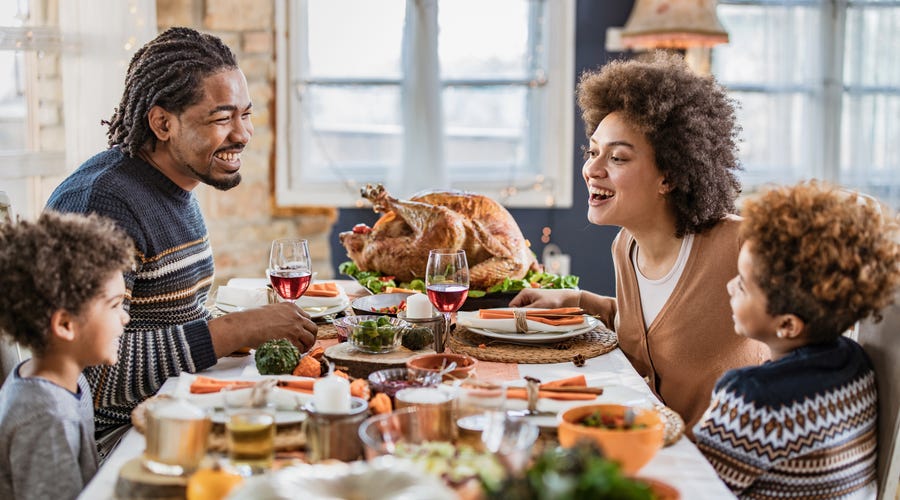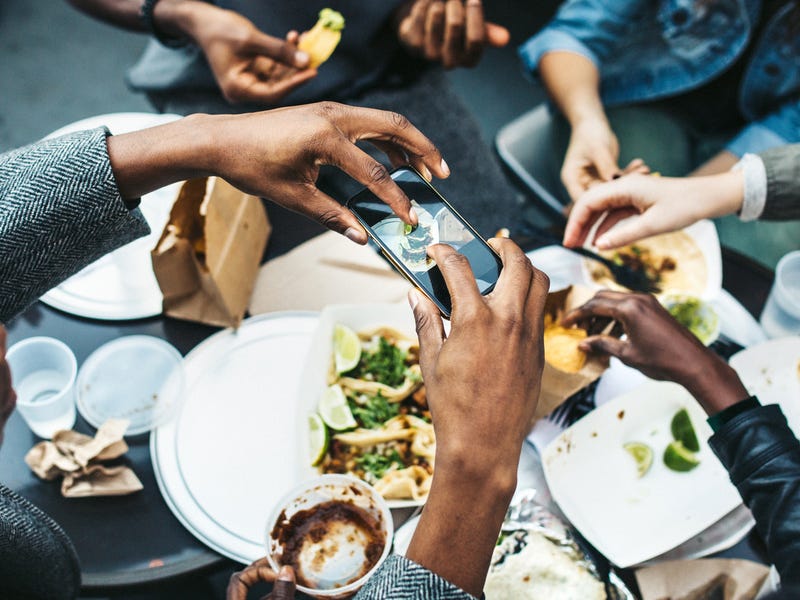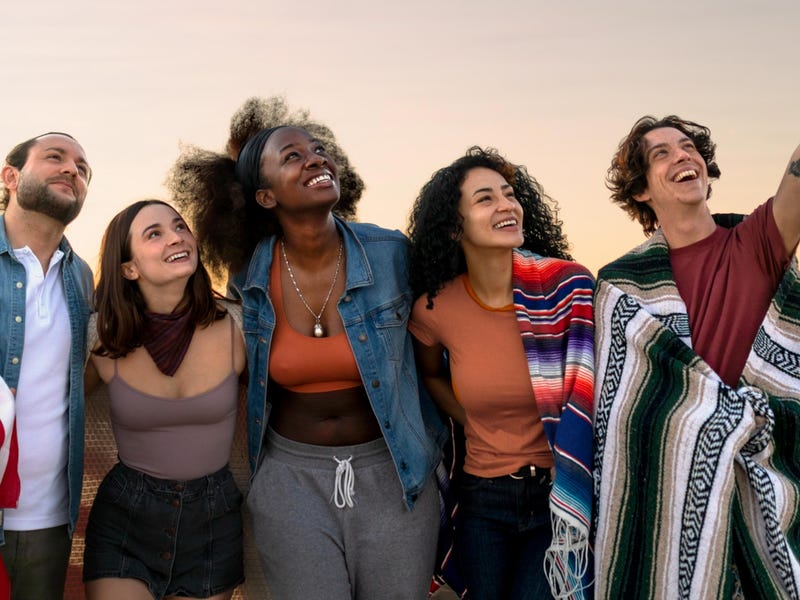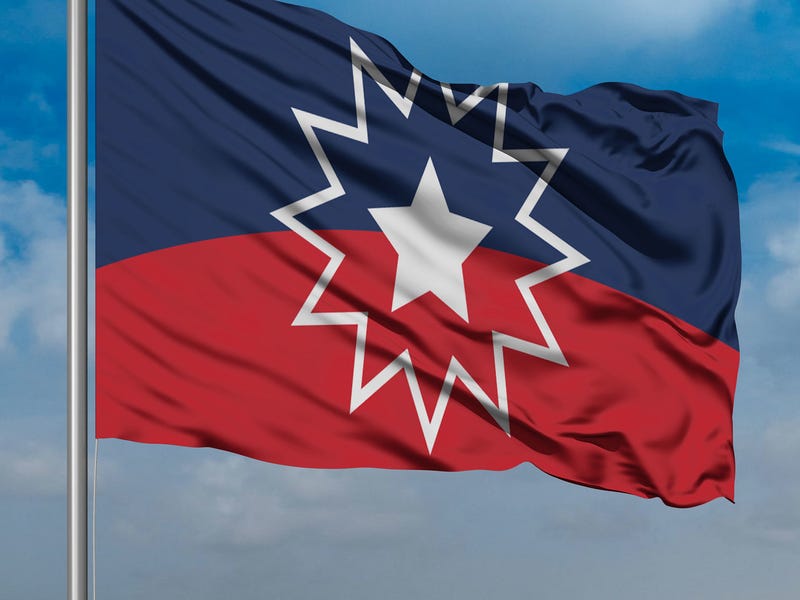Every country is deeply rooted in its traditions, but they take it to a whole new level in the US. Maybe because their history doesn’t go back that far; maybe because of their inexhaustible enthusiasm? Or is it their national pride, criticized but also envied by the rest of the world?
The U.S. is a melting pot of global influences, creating a unique blend of festivities that bring everyone together.
These American traditions are like the ultimate party playlist, mixing old-school vibes with new beats. In a world that's constantly changing, they keep people connected and serve as a reassuring guide that sets the pace of life and defines community identity.
From the epic Mardi Gras parades in Louisiana to the explosive Fourth of July fireworks, without forgetting epic Thanksgiving feasts — more on American cuisine here —, US traditions are a non-stop celebration of their diverse and colorful culture.
Keep reading to join the fun!
Popular holiday traditions in the US
Listing all the traditions of the United States would be endless, so we picked the most popular holidays for you. Enjoy!

Thanksgiving
Thanksgiving traces its origins back to 1621 when the Pilgrims and Native Americans shared a feast celebrating the harvest.
Nowadays, it's all about gratitude, family…. And, as for practically any American event, food. The centerpiece is a roast turkey, often accompanied by stuffing, mashed potatoes, cranberry sauce, and pumpkin pie.
My Texan husband makes sweet potatoes and pecan casserole, green bean casserole, stuffing and Mac & cheese! And for dessert, Mississippi Mud! Our friends in Europe just love this American tradition and even take a day off work to attend!
Typically, families and friends gather for a hearty meal, watch football games, and, in many households, share what they are thankful for. The Macy's Thanksgiving Day Parade, with its giant balloons and floats, is also a beloved tradition — will a balloon fly away this year?
Independence Day (4th of July)
Who hasn’t heard of Independence Day? No, not that one….
This beloved, and oh-so patriotic holiday commemorates the adoption of the Declaration of Independence on July 4, 1776. Celebrations are marked by vibrant fireworks displays, parades, and American music.
Barbecues and picnics are staples, featuring foods like hot dogs, hamburgers, corn on the cob, and apple pie. Communities come together to celebrate with concerts, fairs, and games, all decked out in red, white, and blue.
Halloween
Growing up in France, I only heard of Halloween on TV. Nowadays, this awesome tradition has crossed the pond, and my French nephews celebrate it every year!
Well, to be accurate, it has crossed the pond AGAIN. Indeed, Halloween has its roots in the ancient Celtic festival of Samhain, where people would light bonfires and wear costumes to ward off ghosts.
Today, it's a night of spooky fun. Kids and adults dress in costumes, go trick-or-treating for candy, and attend costume parties. Haunted houses, carved pumpkins (jack-o'-lanterns), and horror movie marathons are all part of the festivities.
It's a time for embracing all things eerie and supernatural. Speaking of which, do you speak ghost? If not, don’t miss our article on conlangs!
Christmas
Yes, it’s commercial. Yes, it’s tacky. But American Christmas is simply irresistible.
Christmas in the US is a festive blend of global traditions and uniquely American practices. The holiday celebrates the birth of Jesus Christ but has also become a secular celebration of joy and giving, no matter what people’s religion is.
Homes and streets are adorned with lights — a LOT of them —, and Christmas trees sparkle with ornaments. Santa Claus, stockings hung by the fireplace, and exchanging gifts are key traditions. Caroling, festive meals, and community events like Christmas markets and light displays add to the holiday cheer, creating a season full of warmth and togetherness.
And it’s not just for snowy states! In California, Hawaii or Florida, palm trees replace Christmas trees, sometimes with a questionable design. Yep…
Learn how to wish people a happy holidays or Merry Christmas around the world here.
Regional traditions around the US
Northeastern traditions
Maple sugaring in New England
Celebrated in states like Vermont and New Hampshire, maple sugaring season marks the time when sap from maple trees is collected and boiled down to make maple syrup. Sugar shacks — cabanes à sucre, as our dear Québécois friends would say — open their doors to the public, offering tours and tastings of fresh syrup, candies, and other maple products.
You can even make your own maple lollipop on snow!
Groundhog Day in Pennsylvania
Held in Punxsutawney, this quirky tradition involves Punxsutawney Phil, a groundhog who predicts the weather. On February 2nd, if Phil sees his shadow, there will be six more weeks of winter; if not, an early spring is expected. The event includes festivities, speeches, and a celebration of local folklore.
I know what you’re thinking: so much pressure on this little groundhog!
Boston Marathon in Massachusetts
Taking place on Patriots' Day in April, the Boston Marathon is the world's oldest annual marathon. Runners from all over the globe participate in this prestigious race, which is a major event for the city. Spectators line the 26.2-mile route, cheering on athletes and enjoying the vibrant atmosphere.

Southern traditions
Mardi Gras in Louisiana
As a French person, I thought I knew what Mardi Gras was about. Well, if you think you do too and you haven’t been to Louisiana, think again!
New Orleans is famous for its Mardi Gras celebrations, which feature elaborate parades, colorful costumes, and lively — that might be an understatement? — street parties. Floats and krewes (social clubs) throw beads and trinkets to the crowds, and the city is alive with music, dancing, and festivities leading up to Ash Wednesday. Believe me, it’s pure madness!
Meanwhile, in Cajun Country, they chase a chicken…
Juneteenth celebrations
Recognized across the Southern states, particularly in Texas where it originated, Juneteenth commemorates the emancipation of enslaved African Americans on June 19, 1865. Celebrations include parades, festivals, historical reenactments, and community gatherings that honor African American culture and heritage. For more information, don’t miss our dedicated article on Juneteenth.
Southern food traditions
Barbecues and crawfish boils are integral to Southern culture. Barbecues, often featuring smoked meats like ribs and pulled pork, are social events that bring communities together. Crawfish boils, especially popular in Louisiana, involve boiling crawfish with spices, potatoes, and corn, creating a festive outdoor dining experience.
For more American traditions, check out our article on American food! — spoiler alert, it WILL make you hungry.

Midwestern traditions
State Fairs
Each Midwestern state hosts its own state fair, such as the Iowa State Fair or the Minnesota State Fair. These events showcase agricultural exhibits, carnival rides, games, and a wide array of fried foods. They are family-friendly celebrations of local culture, industry, and entertainment. State fairs are celebrated nationwide, but it’s a specialty in the Midwest!
Oktoberfest in Wisconsin
Reflecting the region's strong German heritage, Oktoberfest celebrations in cities like La Crosse, Wisconsin, feature traditional Bavarian music, dancing, beer, and food. These events capture the spirit of German culture with activities like polka dancing and beer stein-holding contests.
Tulip Time Festival in Michigan
Held in Holland… Michigan, this festival celebrates the area’s Dutch heritage with millions of blooming tulips, traditional Dutch dances, parades, and cultural performances. It's a vibrant display of community pride and historical appreciation.

Western traditions
Cinco de Mayo in the Southwest
Particularly prominent in states like California and Arizona, Cinco de Mayo celebrates Mexican culture and heritage, commemorating the Mexican army's victory over France at the Battle of Puebla. Festivities include parades, mariachi music, folkloric dancing, and feasts featuring Mexican cuisine.
But do Mexicans celebrate Cinco de Mayo in Mexico? Find out here!
Chinese New Year in San Francisco
San Francisco's Chinatown hosts one of the largest Chinese New Year celebrations outside of Asia. The event includes a grand parade with elaborate floats, lion dancers, firecrackers, and cultural performances, celebrating Chinese culture and traditions.
Rose Parade in Pasadena
Held on New Year's Day, the beautiful Rose Parade features elaborate floats adorned with millions of flowers, along with marching bands and equestrian units. It precedes the Rose Bowl college football game and is a beloved tradition that attracts spectators from all over the world.
Native American traditions
Native American culture is a vibrant and integral part of the United States, with traditions that have endured for centuries. The preservation of these traditions is crucial not only for the cultural heritage of Native American communities but also for the broader understanding and appreciation of America's diverse history. Let’s dive into the main Native American traditions.
Powwows
Powwows are social gatherings that celebrate Native American culture through music, dance, and community. These events can last from a single day to several days and serve as a vital means of cultural expression and community bonding.
Participants often wear elaborate regalia, which is crafted with traditional designs and materials, reflecting the unique heritage of their respective tribes. Powwows also feature competitive dancing and drumming contests, and they provide a platform for the transmission of cultural knowledge to younger generations.
Storytelling
Storytelling is a fundamental aspect of Native American language and culture, serving as a means of education, cultural preservation, and entertainment. Oral traditions are used to pass down history, moral lessons, and practical knowledge.
Stories often feature animals, natural elements, and mythological figures, and they convey deep spiritual meanings and cultural values. Each tribe has its unique narratives, but common themes include creation myths, trickster tales, and stories that explain natural phenomena.
Specific tribal rituals
Navajo Blessingway Ceremony
This ceremony is central to Navajo spirituality and is performed to ensure good fortune, health, and harmony. It involves singing, prayers, and the creation of sand paintings that are believed to attract healing spirits.
Hopi Snake Dance
This ritual, performed by the Hopi tribe, is a prayer for rain and fertility. Participants dance with live snakes in their mouths, which are later released to carry the prayers to the gods.
By the way, if you’re ever in Phoenix, I can recommend the Heard Hopi museum!
Lakota Sun Dance
The Sun Dance is one of the most significant religious ceremonies of the Lakota Sioux. It is a rite of renewal and involves days of fasting, dancing, and often self-sacrifice. Participants seek spiritual visions and the community comes together in a profound expression of faith and endurance.
Importance of preserving traditions
Preserving Native American traditions is vital for several reasons:

Cultural identity
These traditions are a source of pride and identity for Native American communities. They help maintain a sense of belonging and continuity with the past.
Historical awareness
Understanding and respecting Native American traditions fosters a more accurate and comprehensive view of American history, recognizing the contributions and experiences of Native peoples.
Spiritual significance
Many traditions have deep spiritual meanings and are integral to the religious practices of Native American communities. Preserving these practices ensures the continuation of their spiritual heritage.
Educational value
For both Native and non-Native people, learning about these traditions promotes cultural sensitivity, respect, and mutual understanding.
Sporting traditions from the United States of America
In American culture, sports are almost as important as food. I said almost!
So, imagine if you combine both! Keep reading to learn more about America’s absolute favorite sports.
Baseball
Baseball, often referred to as "America's pastime," holds a special place in U.S. culture. Its history dates back to the 19th century, and it has become synonymous with American identity and tradition.
Baseball has been a mirror of American society, reflecting changes in culture, economy, and politics. It played a role in breaking racial barriers, most notably when Jackie Robinson integrated MLB in 1947.
Major League Baseball (MLB) boasts storied franchises like the New York Yankees, Boston Red Sox, and Chicago Cubs, each with a rich history and passionate fan base.
Attending baseball games is a cherished activity for families, fostering a sense of community and continuity. The leisurely pace of the game — it’s looooong! (European point of view) — makes it conducive to socializing and enjoying the company of others.
From the singing of the national anthem and "Take Me Out to the Ball Game" during the seventh-inning stretch, to the ceremonial first pitch, baseball is steeped in rituals that enhance its cultural resonance.
American football
American football is arguably the most popular sport in the United States, with the National Football League (NFL) commanding a massive following. The sport is characterized by its physicality, strategic complexity, and the spectacle of its games, especially the Super Bowl.
Football games, particularly on Sundays, have become a staple of American life. The Super Bowl, the NFL's championship game, is the most-watched television event in the U.S., combining sports with entertainment in a grand spectacle.
Tailgating before games, Thanksgiving Day football, and the Halftime Show during the Super Bowl are US traditions that are eagerly anticipated and widely celebrated.
For us Europeans, it’s hard to understand the breaks every 5 seconds, and the duration: it can last over 4 hours, and it’s a whole day affair with the parade and events before the game!

Basketball
Basketball, with its fast pace and urban appeal, has grown to be a major sport in the U.S., thanks in large part to the influence of the National Basketball Association (NBA). Icons like Michael Jordan, LeBron James, and Kobe Bryant have helped elevate the sport's profile globally.
Basketball is particularly significant in urban areas and has been influential in shaping popular culture, including music, fashion, and lifestyle.
The sport is accessible and popular among youth, with countless kids playing in schools, parks, and community centers. It is a critical avenue for young athletes, particularly those from underprivileged backgrounds, to gain opportunities.
Importance of college sports
College sports play a crucial role in American culture, with an impact that extends far beyond the athletic programs themselves. This is very different from Europe, and is deeply engrained in North American traditions!
College sports teams often serve as the primary source of pride and identity for students, alumni, and local communities. Events such as college football games and basketball tournaments draw large crowds and foster a strong sense of belonging.
These events can be significant economic drivers for their institutions and surrounding communities. They generate revenue through ticket sales, merchandise, and media rights, which can fund other athletic and academic programs.
College sports are also a platform for student-athletes to develop their skills and potentially advance to professional levels. Scholarships and athletic programs offer educational opportunities for many young people who might not otherwise afford college.
The games are rich with traditions, from the singing of fight songs and mascots — sometimes a living animal like Texas Longhorns’ beloved Beevo — to historic rivalries that capture the national imagination, such as the Michigan-Ohio State football rivalry or the Duke-North Carolina basketball games.
And if you love sports as much as Americans, learn some sport vocab in English here!
Uniquely American traditions
We’ve already mentioned Thanksgiving, Halloween, Fourth of July, Juneteenth and the Super Bowl, but there are many more traditions unique to the US.

Memorial Day
Memorial Day, observed on the last Monday of May, honors the men and women who have died in military service to the United States.
Originally known as Decoration Day, it began after the Civil War to commemorate Union and Confederate soldiers who died in the war. It was officially designated as Memorial Day in 1971.
The day is marked by visiting cemeteries and memorials, often with the placement of American flags on graves of fallen soldiers. Many communities hold parades featuring military personnel and veterans. It also marks the unofficial start of summer, and people often celebrate with barbecues, family gatherings, and outdoor activities.
Oh, by the way, apparently you shouldn’t wear white before Memorial Day. But if you live by your own fashion rules, here is a piece of advice. Wow.
Veterans Day
Another military tradition, Veterans Day, observed on November 11th, honors all military veterans who have served in the United States Armed Forces.
Originally known as Armistice Day, commemorating the end of World War I, it was renamed Veterans Day in 1954 to honor veterans of all wars.
Celebrations include parades, ceremonies, and the laying of wreaths at monuments and memorials. Schools and communities often hold events to recognize and thank veterans for their service. The day is marked by patriotic displays and moments of silence to honor those who have served.
Martin Luther King Jr. Day
Martin Luther King Jr. Day, celebrated on the third Monday in January, honors the civil rights leader Dr. Martin Luther King Jr.
Established as a federal holiday in 1983 and first observed in 1986, the day commemorates Dr. King’s contributions to the civil rights movement and his advocacy for nonviolent resistance.
The day is often marked by educational programs, seminars, and commemorative events highlighting Dr. King’s legacy and the ongoing struggle for racial equality. Many people participate in community service activities, reflecting King’s commitment to social justice and community improvement.
Black Friday
Black Friday, the day following Thanksgiving, marks the beginning of the Christmas shopping season in the U.S.
The term "Black Friday" originated in the 1960s in Philadelphia to describe the heavy and disruptive pedestrian and vehicular traffic that would occur on the day after Thanksgiving. It has since evolved into a major retail event that has gone global in the past few years.
Retailers offer significant sales and promotions, attracting large crowds to stores. Many people start shopping in the early hours of the morning or even on Thanksgiving night. The day has also expanded to include online shopping deals, and the entire weekend, including Cyber Monday, has become a critical period for retail sales.
American traditions are a wild, colorful celebration of its quirky, vibrant soul
Just like the country itself, they’re diverse, grand — sometimes extravagant — with a lot of glitter and pride. These uniquely American rituals are more than just holidays — they're a testament to the country's history, spirit of joy, community, and boundless energy.
If you study English in the US, take this opportunity to immerse yourselves in these beautiful US traditions, the glue that binds people together, creating shared experiences and memories that are passed down through generations.
So, cheers to these traditions — each one a unique slice of the American pie, each one a reason to come together, laugh, and celebrate what it means to be part of this incredible, ever-surprising country.
Let the fireworks fly, the turkey roast, and the good times roll! And learn more about culture on our culture blog here, or English or on our English blog here.



